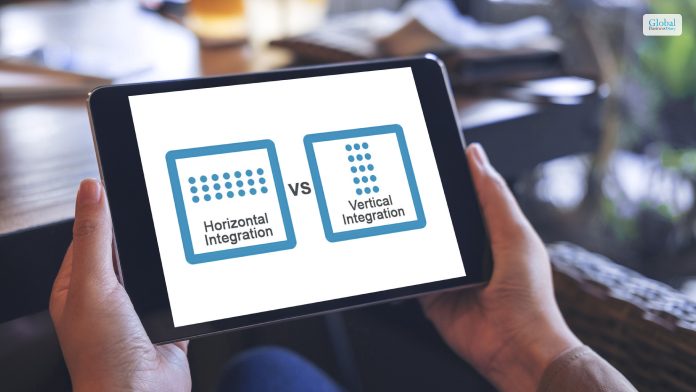How To Build A Personal Brand For Your Business? – 7 Rules To Follow

Creating a personal brand for yourself is not that easy. You can consider it as one of the daunting tasks if you are not ready for it. Creating a personal brand sounds very simple, but it can lead to several problems if you do not prepare.
Personal brand means creating a separate identity of yourself in the market to get a better response rate. From your customers, you can receive a better response once you establish yourself as a personal brand.
Today, personal branding is not as easy as it seems to be, as you have to undergo several work processes to handle this thing with care. Today, personal branding has not become an easy task for many entrepreneurs as they do not know the basics properly.
Benefits Of Personal Branding
People talk about personal branding and importance of brand identity, but they do not know it in detail. There are several significant benefits you can enjoy by creating your brand. Proper and effective planning can work well if you want to make your brand for yourself.
1. Granting Permission To Yourself
Personal branding means you are highlighting yourself in front of the world and celebrating your individuality. You are expressing your authentic self to the world.
You can project yourself as a unique person with numerous talents and skills. It is one of the essential types of marketing techniques that can work well for you.
Each of us is blessed with some unique skill sets that we can offer to the world, and personal branding helps us do that more effectively.
2. Gaining Confidence
When you develop your brand, you can gain Confidence in your domain or skill sets. Furthermore, you can generate Confidence when you recognize your strengths and highlight them to the world.
Keep the chicken of your choice on the right track while you want to develop the best version of yourself. Then, as you create the building blocks of your personal brand, you can understand the positive aspects of your personality.
In this aspect of your brand building can help your branding can help you achieve your business goals correctly. You can also consider yourself an expert financial planner or an angel investor to create a self-branding of yourself in the financial world.
3. Building Credibility
You can build your credibility, not through your words but your actions. When you project yourself as a personal brand, you have to give Confidence to your target audience that you will do what your target audience expects from you.
Building confidence among your target audience is not that easy if you want to project yourself as a successful brand in the market.
Personal branding can help you to increase your reach in the global market. Try to keep your brand promise to instill Confidence in the minds of your target audience.
4. Showcasing Your Speciality
When showcasing yourself as a personal brand, you must highlight your unique skills and USP that is new to the world. It will help you to spread your brand awareness at a faster pace.
It will help you to achieve your business objectives quickly in a short time frame. Proper planning can make things easier and effective for your business as a projection of the right skills set can make things easier and effective for you.
5. Leaving Your Mark
One of the essential parts of branding is leaving your mark that you are the best in a specific skill set. You can leave the impact of your expertise when you can provide the best services and add value to your business correctly.
You can leave your mark when you can establish your brand name successfully in the market. It sounds easy, but in a practical sense, it is not that easy at all.
7 Golden Rules To Follow For Personal Branding Strategy
There are some of the golden rules you have to follow while building your branding. You cannot stay ignore these points while you want to develop the personal branding of your own self while using these factors. So let’s find out some of the core reasons while you want to create and follow the reasons for the personal branding of your business.
1. Have Your Focus
Too many people are unfocused while they want to develop their branding. Instead, create and find out your key message for the business and try to build on it. Her brand has undergone some dramatic shifts that can work well in your favor.
No bigshots of the world to date have achieved success in life by focusing on multiple things. You can only successfully create your personal brand when you can focus your attention in one direction. So prepare the right plans that can work well in your favor.
2. Be Genuine In Your Approach
There is no other way to create a genuine and original personal brand that is authentic and genuine in your terms. To complete your brand, you have to make your own story that can work well in your favor. Then, more audiences can approach you when you show your natural talent by all means and effectively.
You have to be genuine and original in your approach while correctly developing your business. Do not make plans that cannot work well in your favor. Instead, prepare the correct business strategy that can create a long-term impact on your business.
3. Tell Your Story
The original life story of yourself matters a lot for your brand, especially if you are turning your attention to the personal branding of your business. Every human being has their stories of uncertainty and struggles in their life.
For your successful branding, these stories matter a lot. You cannot ignore these points while you want to establish your personal brand in the market with high repute. The more you can think positively, the better you can achieve your goals in the proper manner.
You can share the story of your personal branding through written content or from your YouTube channel. Proper planning can make things effective and essential for your business if you want to achieve success in your career in the long run.
4. Maintain Consistency
Being consistent in your approach means you are having a narrow focus for your branding. Think in a singular way out rather than on multiple factors. Work out the ways that can help you to achieve your business or personal branding goals in an effective manner.
Consistency can help you to bring success to your career path. The reason is you are focused on one thing not on multiple things all at a time. You have to set your targets and goals in a unified formation while developing your business.
5. Accept Failure And Bounceback
Failure is the pillar of success once said by a great man. But in the professional world, you have to bounce back after your failure. It can help your business to develop and grow in the right direction. Do not make things complicated for yourself.
Plan out the ways that can make things easier and effective for your business. Do not make things complicated or difficult for you if you want to achieve success in your life. Prepare the correct strategy that can work well in your favor. Learn new things and bounce back with your full power.
6. Create A Positive Impact
Creating a positive impact can make things easier and effective for your business. After you have developed your personal brand you need to continue to grow your community over a particular period of timing.
Make sure you do not fall into a trap while you want to develop your personal brand in the right way. Creating brand awareness will be easy for you if you can follow this process in all aspects. Proper creation of the plans can make things easier and effective for your business.
7. Follow Successful Examples
Follow the success stories of the great men and build yours. Prepare the correct business strategy that can work well in your favor. Work out plans that can make things easier and effective for your business and for your personal branding.
In one word I must say follow the pathways of great men and lead by example. Work out the plans that can make things happen in your favor in all aspects. Do not make things complicated for yourself. The more transparent you are in your approach, the better you can achieve your goals in the best possible manner.
Final Take Away
Hence, these are some of the core facts that you have to take care of while you want to create your personal branding. Work out plans that can make things easier and effective for your business. Do not make things much more complicated than you cannot achieve later.
Ensure that you must not perform all the crucial work all at a time rather try to give your best in one thing that can work out the ways in an effective manner.
Frequently Asked Questions (FAQs)
How Can You Create Your Personal Brand?
You can create your personal brand in different ways like:
- Claim your name.
- Position yourself as a personal brand.
- Promotes the colleagues of your business.
- Answer the questions of as many people as you can.
- Post frequently.
How Can You Create Your Business Brand?
There are several, ways you can create your own brand like:
- Determine the business USP.
- Find Out how others can see your business.
- Identify your business goals.
- Identify your target audience.
- Re-organize your business priorities.
Read Also:















